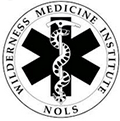.png)
 Are you an EMT looking for a unique way to get those CEUs? At the Ready originally wanted an article from the Wilderness Medicine Institute (WMI) to discuss mutual aid in remote terrain, but the conversation with Gates Richardson, the WMI director, quickly swirled into talking about the incredible training opportunities with WMI. We were hooked from the descriptions of courses with scenarios in Mountaineering, Backpacking, Sailing, Sea Kayaking, Back Country Skiing, etc. Sign us up!
Are you an EMT looking for a unique way to get those CEUs? At the Ready originally wanted an article from the Wilderness Medicine Institute (WMI) to discuss mutual aid in remote terrain, but the conversation with Gates Richardson, the WMI director, quickly swirled into talking about the incredible training opportunities with WMI. We were hooked from the descriptions of courses with scenarios in Mountaineering, Backpacking, Sailing, Sea Kayaking, Back Country Skiing, etc. Sign us up!
We reached Gates in Annapolis, Maryland, where the National Outdoor Leadership Institute (NOLS), the “parent organization” of the WMI, has been providing courses to the US Naval Academy since 2005. This year, WMI is offering the EMT course to Midshipmen within the NOLS summertime training block. Since 1990 the WMI has conducted around 600 courses per year in approximately 45 states and 14 countries. They train levels of Wilderness Medicine from the basic first aid course to the Wilderness Emergency Medical Technician course where graduates receive both NREMT-B and WEMT certifications. Courses are taught in several ways. Field Expeditionary courses range from 2 weeks to 1 year in length, and as the name implies are taught in the field. The Professional Training courses are taught in classroom settings. Finally, there are “hybrid” courses that combine classroom training and scenarios in the field.
All Wilderness Medicine is at the Basic Life Support (BLS) level. Sometimes patient care will extend for hours or days, and in the wild carrying food is more important than carrying IV fluid. The WEMT does not arrive on scene in the traditional sense, but is already there as an emergency arises. Under consult with a medical advisor, WEMTs may have to reduce a dislocation or perform spinal mobilization without the tools of the “urban EMT.” This is transitional medicine, combining wilderness expertise with BLS stabilization. Make no mistake; this medicine may be practiced days from help and hospital. Absent a SATCOM phone, someone may have to hike out for miles to call for assistance.
The intended audience for a given course varies from the individual who is taking a personal course before embarking on an extended outdoor trip, to the professional Wilderness Guide, or the medical professional seeking to add Wilderness Medicine to his skillset. Courses are tailored to both the experience of the students (their previous exposure to medicine) and the individual goals for the training. For an individual seeking the Wilderness First Aid (WFA) certification, the course is 16-20 hours; for the WEMT (and NREMT-B) certification, students must complete the 200 hour course. For a course comparison chart, click here.
For the already certified “Urban EMT” or other certified medical professional, there is a five day program called WUMP. The Wilderness Upgrade for Medical Professionals will earn graduates a WEMT certification, 48 CEUs or 36 CMEs (for physicians), and a chance to spend five days in a class that includes a night rescue scenario. The Wilderness Medicine Expedition courses are available, taught as a hybrid, where students spend one day in the classroom and 7-8 days on a field expedition, backpacking, sailing, back country skiing, all while experiencing scenarios in the field.
Most WMI courses are sponsored by other agencies, held at the host location. Of the over 600 courses taught each year, over 500 are hosted by another agency. WMI charges a set fee for the course, but the tuition rate charged to attendees is set by the sponsoring agency. Some agencies sponsor courses and open slots to the paying public. This helps cover the costs for the department personnel to attend, and sometimes to help raise training funds. Sponsors also include non-first responder sources. REI, the outdoor company, sponsors 2-day training courses in their stores each year.
We did get around to discussing mutual aid. The WMI courses prepare students for the challenges of long-term care and coordination with search and rescue crews and those who respond to the identified patient. First, they are taught to pre-plan for an emergency. Often the sheriff’s department deploys the search and rescue within a county, so students ensure they know who the rescue agency is for the area, and the number to call. Wilderness First Responders and Wilderness First Aid students are taught a reliable system in a structured fashion to interface with other emergency rescue providers. They learn the basic radio patient report (“23 Y.O. male, CA&O, complaining of ankle pain,” for example) and how to prepare to transfer a patient to another provider when the medics arrive.

For information on the WMI, course availability, schedules, and locations, please visit the WMI website and to follow NOLS on Facebook, visit them here.








